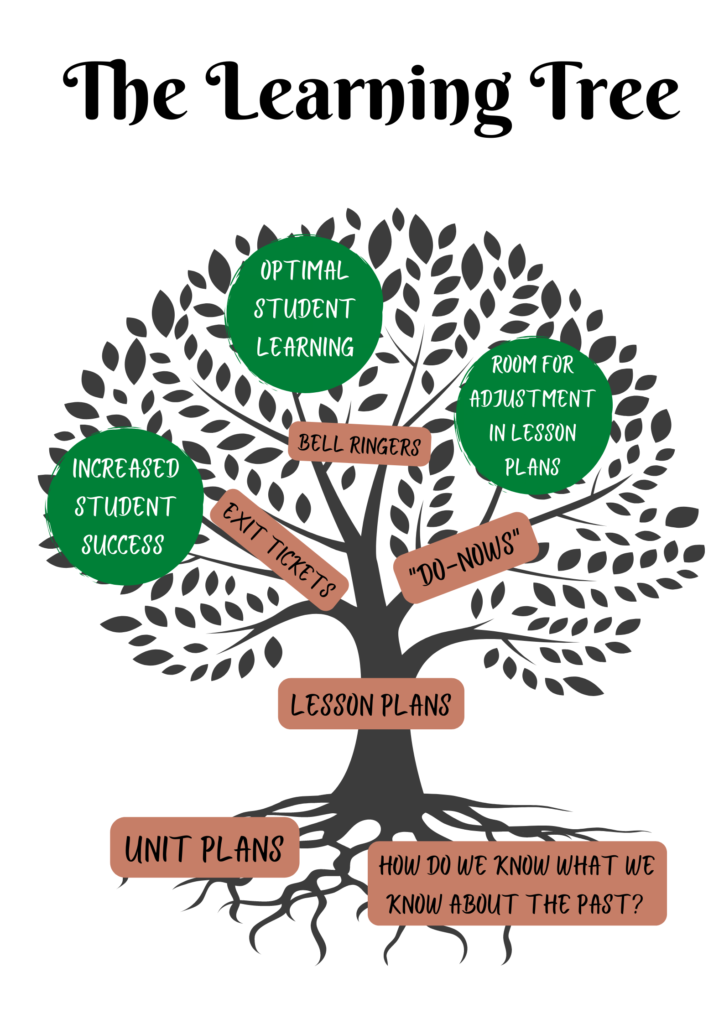Plan, plan, plan! Planning is a highly critical part of effective teaching. You must prioritize planning if you want your students to actively engage in the material, fully comprehend the topics, and apply their learning to their own lives.
Below I have created “the learning tree.” This is meant to represent the significance of planning and how it leads to simultaneous student-teacher growth.
Unit plans serve as the roots of the tree. They consist of concepts and learning goals taught over a period of time. We design units to maximize the flow and interconnectedness of lesson plans. An effective unit plan will involve cross-curricular studies and a series of goals and big ideas. It is important when creating one of these that you consider your students’ background knowledge; ask questions that guide their thinking; assess student learning before, during, and after lessons and the overall unit; and outline the academic goals of the unit, deciding what students should know and be able to do at the end of the unit. Your unit plan should focus on answering the question, “how do we know what we know about the past?”
Lesson plans represent the trunk of the tree. Key parts of a lesson plan include time allotment, lesson phase, and details. Lesson plans are essential for clear, organized instruction. Using the eight-phase lesson template is a great way to ensure you are developing an effective lesson plan. The phases are as follows: introduction, foundation, brain activation, the body of new information, clarification, practice and review, independent practice, and culture.
After you assess student background knowledge and expand upon it with new information, you should evaluate student understanding. This can be done through the use of bell ringers, do-nows, and/or exit tickets. Based on these formative assessments, you can judge what topics students “get” and what topics need further instruction and practice.
All of these things promote both student and teacher academic growth and success. Teachers have the opportunity to reflect on their unit and lesson plans and make any necessary adjustments to better suit students’ learning needs. Likewise, students retain content better and are more engaged in the process of learning.
“Yesterday’s learning is complemented in today’s lesson, which leads to achievement tomorrow and beyond (Cunningham, 2009).”


I agree fully that planning is one of the most crucial things for an educator to do. The lessons that you create will shape the students learning and aid in training them to be independent thinkers. What you did with the idea of the “learning tree” is awesome! I like how the roots depict the importance of planning and that this is what inspires growth. You also mention different strategies like exit tickets and bell ringers which can be extremely beneficial. This process not only produces success but also allows you as the teacher to see where your growth and adjustment are needed. The goal is growth! Never lose sight of this and always plan! You created a unique way to understand this!
Excellent use of the graphic to explain the importance of planning. This method would also support the idea of uncoverage because with tools like bell ringers and exit tickets you allow the students to provide data, which can then be used to make adjustments.